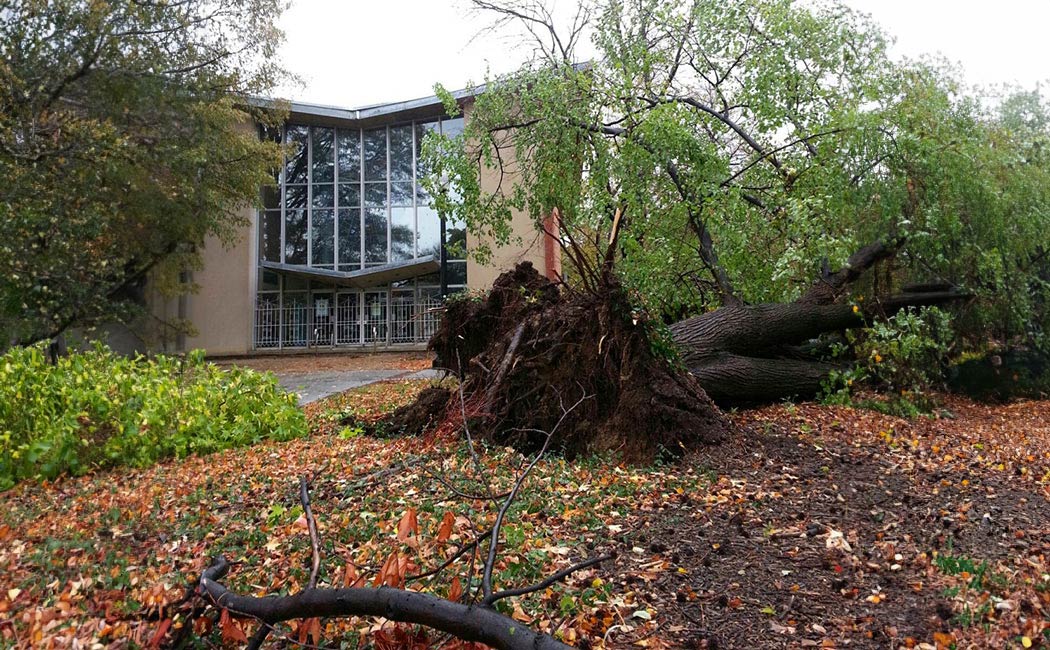When a tree falls due to a storm, age, or decay, you must have it removed as soon as possible. The cost is determined by a number of criteria, the most important of which is how difficult the tree removal service anticipates the removal to be.
If the tree fell near overhead utility lines, call your utility company before having the tree removed. You don’t want to unintentionally turn off the power to your entire neighborhood.
Factors that Influence Removal Costs
The size and diameter of the tree, as well as whether or not it was healthy when it fell, all go into the price. A healthy tree is more difficult to break up and remove. The tree’s height is most certainly the most expensive factor, but the diameter of the trunk also matters. In other words, the more trees that need to be cut down, the more money you may anticipate to pay.
Because it’s easier to break up a dead or rotting tree, removal should be less expensive. If this is the case, inform each vendor from whom you request a price, as this should result in a reduced estimate. Finally, the cost is affected by the tree’s position. The lesser the price, the further it is from your home or any other impediments that make removal more difficult.
You should also contact your insurance carrier to see if they will cover the removal of the tree as well as any damage it may have caused to your property.
The Average Cost of Removing a Fallen Tree
Fortunately, removing a fallen tree is usually less expensive than removing one that is still firmly planted. You may anticipate to pay between $75 to $150 on average, though the cost of carrying the tree away may be more. It may cost extra if the branches need to be trimmed away. The cost of stump removal is roughly the same as the cost of removing the tree, ranging from $75 to $150 depending on the diameter of the stump and the method used to remove it. Hourly rates vary widely by location, therefore costs vary a lot depending on where you are.
Additional Factors to Consider When Dealing with a Fallen Tree
When getting quotations, make sure you know exactly what you’re getting. Extra expenses for stump removal and hauling are usual.
Stump removal: Unless your tree was ripped out by the roots by a tornado, your fallen tree most certainly left a stump. Most stump grinding and removal services demand an additional fee. The two most popular pricing options are per the inch ($2–$3 per inch) or by a minimum rate of roughly $100. If you need many stumps removed, expect to pay an hourly rate of roughly $150 per hour, while some firms impose a one-time price of around $150 for the first stump and a much lower rate of around $50 for each consecutive stump.
If the tree is fairly huge and needs to be chopped into manageable pieces for removal, an additional price of roughly $50 may be charged.
If you want to transform a fallen tree into firewood, you’ll have to pay $75 for someone to split the logs into firewood.
Travel: If you reside in a remote area, you may be charged an additional fee for travel, which varies greatly based on your approximate location and the distance the service must travel to reach you.
Who Is in Charge of Tree Removal?
In general, you are only liable for harm to someone else’s property if you knew the tree was ill or dead when you planted it. This usually means that the degradation is visible—for example, in the summer, limbs without leaves. Other symptoms of a dying tree include:
- During the growing season, yellow, brown, and brittle leaves or needles appear, especially in the top third of the tree.
- Branches that are excessively damaged or fallen
- Missing bark patches
- Fungus development
- Wood-boring insects have drilled rows of holes in the wood.
- Roots that are shaved or slimy
- There is a noticeable slant in one direction.
It’s not usually your job to fix non-visible damage that only an arborist can see. If you’re aware of a potentially hazardous tree on your property, take steps to remove it; if you don’t, you could be held accountable for any damages caused by the tree’s collapse.
It’s vital to keep in mind that liability for fallen trees varies by state and/or municipality. For example, metropolitan areas may have greater standards of care than rural areas, therefore an urban homeowner may need to monitor trees along property lines more frequently than a rural landowner. To find out what the criteria are in your area, contact your municipality’s arborist division.
The following are some broad guidelines that can be used across the country. Please keep in mind that a municipality is likely to own a tree on public land.
Your neighbor’s tree is dead and dangerously close to your property line. So, what’s next?
In this instance, the best thing to do is establish a line of contact with your neighbor. Inform him or her that their tree is dead and inquire about their willingness to have it removed. Offering to split the expense of a tree examination and/or removal, if your budget permits, may make this conversation go a bit smoother.
Most people will appreciate the heads-up, but if the conversation doesn’t go as planned (or if your neighbor refuses to have the tree evaluated or removed), you may need to try another approach.
Documentation is essential in any situation involving the prospect of insurance claims or legal action. Write your neighbor a note expressing your concerns about the tree. Clearly request that the tree be removed, and state that if the tree falls and destroys your property, you will pursue legal action.
Send the letter to your neighbor via the US Postal Service, and for your own safety, send it certified with a return receipt so that you have proof that the letter was received. Make two copies of the letter, one to send to your insurer and one to maintain for your records.
Is this how you make friends with your neighbors for life? Most likely not. However, your home is one of the most important assets you will make, and you must safeguard it.
A nearby tree has fallen on your property. So, what’s next?
Look for evidence of deterioration on the fallen tree. You may choose to initiate a case against the tree owner if he or she was irresponsible about an evident ailment and refused to remove the tree themselves. However, keep in mind that such cases can be time-consuming and costly, and proving negligence can be difficult.
If the tree owner did not act negligently, you are liable for cleaning up the tree debris on your property and paying for the damage to your home, whether out of pocket or through your insurance. Although you and your neighbor may consider financial arrangements, the tree owner is under no legal responsibility to compensate you for any damage to your property.
Your tree has fallen on someone else’s land. So, what’s next?
A lawsuit may be filed against you if you were negligent in the treatment of a visible disease.
You are only liable for cleaning up the part of the tree that is on your property, not your neighbor’s, if there was no negligence on your part. Again, discussing cooperative cleanup with your neighbor is an option, but it is not required by law. Any damage to your neighbor’s home or property should be handled by his or her homeowner’s insurance company.
Get A Palm Tree Trimming or Removal Quote In Phoenix, AZ
If you are interested in receiving a free cost quote for Palm Tree Trimming anywhere in the Phoenix Valley, let Arbor Care Help!
We provide affordable Palm Tree Trimming services in Phoenix, Scottsdale, Chandler, Scottsdale, Gilbert, Glendale, Mesa, among others. Remove those sick or dead Palm Trees and enhance your residential yard or commercial property.







